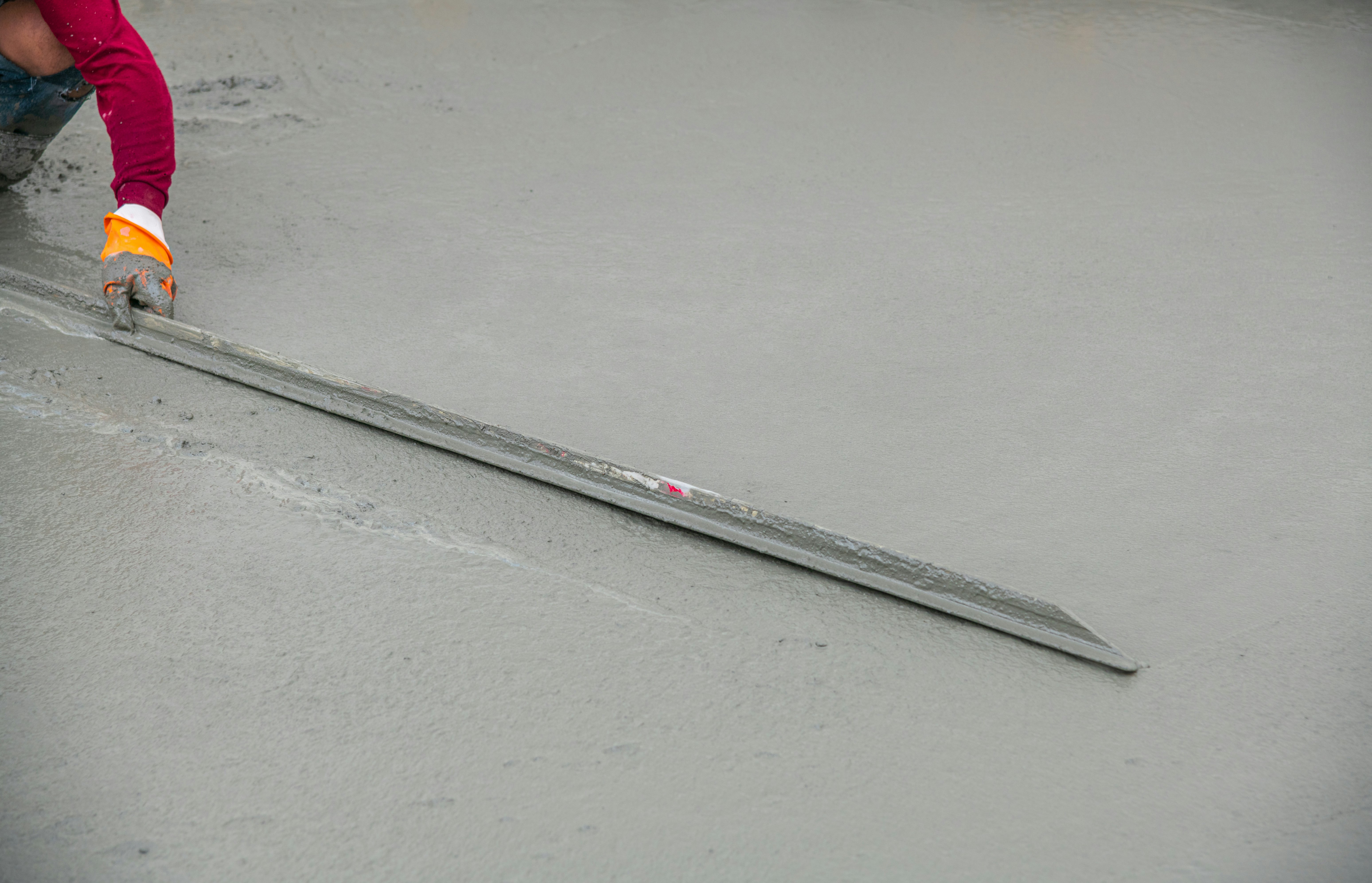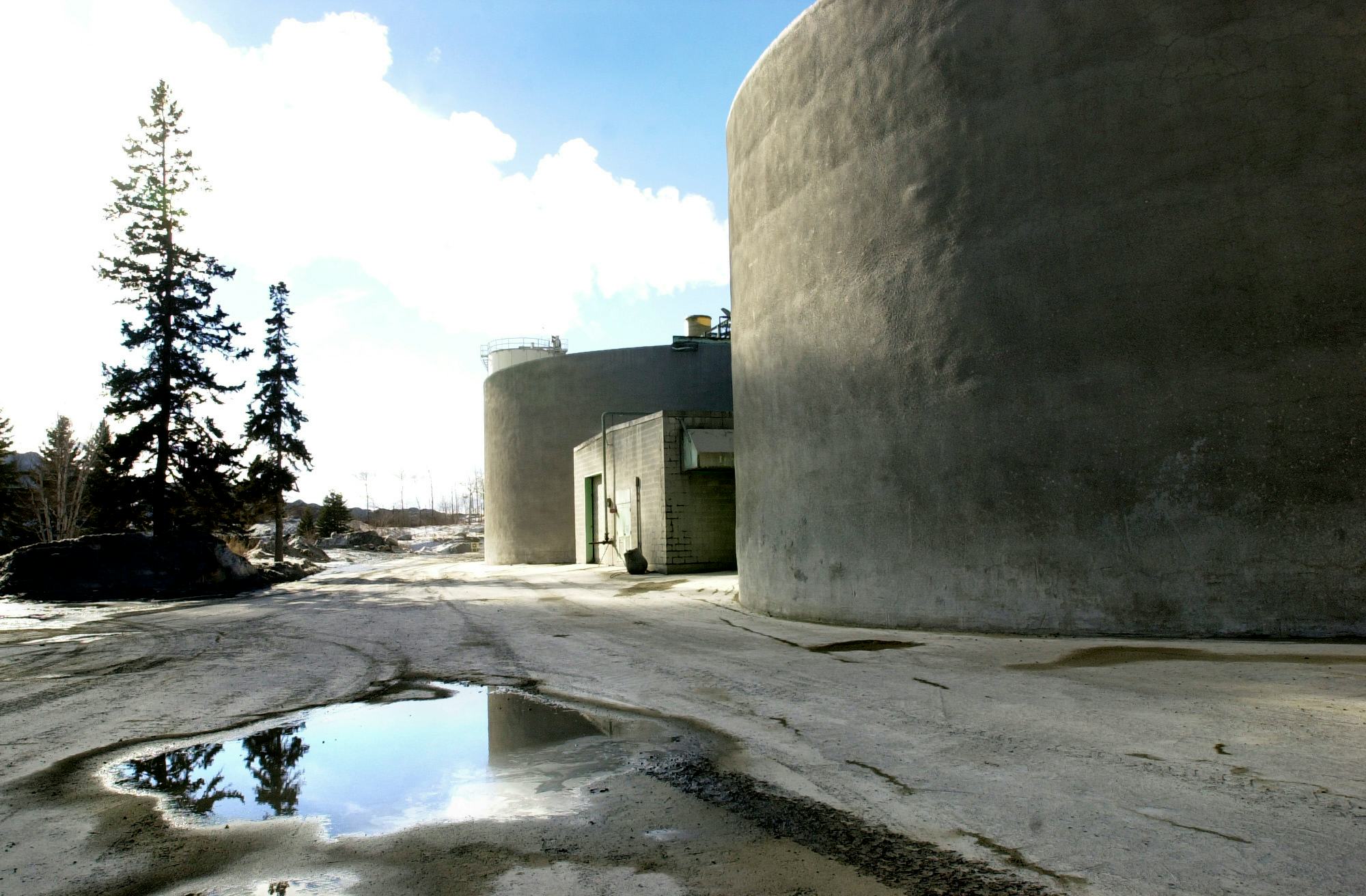
Nobody knows who did it first or when. But by the 2nd or 3rd century B.C.E., Roman engineers were routinely grinding up burnt limestone and volcanic ash to make cementum: a powder that would start to harden as soon as it was mixed with water.
They made extensive use of the still-wet slurry as mortar for their brick- and stoneworks. But they had also learned the value of stirring in pumice, pebbles, or pot shards along with the water: Get the proportions right, and the cement would eventually bind it all into a strong, durable, rock-like conglomerate called opus caementicium or — in a later term derived from a Latin verb meaning “to bring together” — concretum.
The Romans used this marvelous stuff throughout their empire — in viaducts, breakwaters, coliseums, and even temples like the Pantheon, which still stands in central Rome and still boasts the largest unreinforced concrete dome in the world.
An ancient legacy

Two millennia later, we’re doing much the same, pouring concrete by the gigaton for roads, bridges, high-rises, and all the other big chunks of modern civilization. Globally, in fact, the human race is now using an estimated 30 billion metric tons of concrete per year — more than any other material except water. And as fast-developing nations such as China and India continue their decades-long construction boom, that number is only headed up.
Unfortunately, our long love affair with concrete has also added to our climate problem. The variety of cementum that’s most commonly used to bind today’s concrete, a 19th-century innovation known as Portland cement, is made in energy-intensive kilns that generate more than half a ton of carbon dioxide for every ton of product. Multiply that by gigaton global usage rates, and cement-making turns out to contribute about 8 percent of total CO2 emissions.
Granted, that’s nowhere near the fractions attributed to transportation or energy production, both of which are well over 20 percent. But as the urgency of addressing climate change heightens public scrutiny of cement emissions, along with potential government regulatory pressures in both the United States and Europe, it’s become too big to ignore. “Now it’s recognized that we need to cut net global emissions to zero by 2050,” says Robbie Andrew, a senior researcher at the CICERO Center for International Climate Research in Oslo, Norway. “And the concrete industry doesn’t want to be the bad guy, so they’re looking for solutions.”
Major industry groups like the London-based Global Cement and Concrete Association and the Illinois-based Portland Cement Association have now released detailed road maps for reducing that 8 percent to zero by 2050. Many of their strategies rely on emerging technologies; even more, are a matter of scaling up alternative materials and underutilized practices that have been around for decades. And all can be understood in terms of the three chemical reactions that characterize concrete’s life cycle: calcination, hydration, and carbonation.
The direct approach: Eliminate emissions from the start

Portland cement is made in giant rotary kilns that carry out the calcination reaction:
calcium carbonate (limestone, chalk) + heat → calcium oxide (quicklime) + carbon dioxide.
The carbonate-rich rock is ground up and placed in the kiln along with clay, which fuses with the quicklime and contributes minerals that will eventually help the concrete resist cracks and weathering. The end result is “clinker”: pale, grayish nodules that are ground to make cement powder.
About 40 percent of a kiln’s CO2 emissions arise from the “heat” term in this equation, and it’s been a tough fraction to cut. Clinker production requires peak temperatures of 1,450 degrees Celsius, hotter than molten lava, and kiln operators have long assumed that the only practical way to get there is to burn coal or natural gas. Biomass-like wood doesn’t burn consistently hot enough. And standard electric heaters powered by renewable sources like wind or solar get their heat from electrical resistance in current-carrying wires. “You can’t get much out before the wire just falls apart,” Andrew says.
Yet the industry has now begun to explore all-electric options that can be powered by renewables. In May, for example, the Swedish green-tech firm SaltX Technology demonstrated that it can produce clinker with its Electric Arc Calciner: a proprietary system similar to the plasma torches widely used by automakers and other manufacturers for cutting metal. Plasma torches pass an electric current through a jet of inert gas, typically nitrogen or argon, which ionizes the gas and heats it to temperatures over 20,000 degrees Celsius. In June, SaltX announced a partnership with the Swedish limestone supplier SMA Mineral to accelerate the commercialization of its technology.
And in 2021, the German firm HeidelbergCement demonstrated that it could make clinker by replacing fossil fuels with hydrogen, which burns at over 2,000 degrees Celsius. Hydrogen is mostly made from natural gas at the moment. But it can also be made via the electrolysis of water. So as clean energy prices fall, and the generation of lots of hydrogen with green electricity becomes more plausible, Andrew says, the interest of cement companies is growing.
But even then, there’s work to be done before cement makers around the country and the world can switch over to hydrogen wholesale, says Richard Bohan, who leads the Portland Cement Association’s sustainability efforts. The systems aren’t yet set up for it. “Hydrogen would be great — and right off the bat, could reduce our carbon footprint by 40 percent,” he says. “Hydrogen, though, requires infrastructure — either pipelines or a very robust electric grid that in some areas of the country we don’t have yet.” It could help, experts say, if Congress passes proposed measures to expedite energy projects.
“These newer technologies are at various stages of R&D and commercialization.”
To tackle the other 60 percent of cement emissions — the CO2 that’s released on the right-hand side of the calcination reaction — the industry is beginning to revive some old alternatives for cement’s raw materials.
Simply by adding some powdered, unbaked limestone to its final product, for example, a kiln’s carbon footprint can be reduced as much as 10 percent. (Limestone alone is relatively inert but will help Portland cement harden when it’s mixed with water.) This Portland-limestone cement is already commonly used in Europe and is now taking off in the United States. “We’re seeing regions of the country where Portland-limestone cement are the predominant material and we’re hearing individual plants say that they’re only going to produce this type from now on,” Bohan says.
Kiln operators are also taking a fresh look at replacing some of their limestone-based cement with mineral-rich industrial waste products. One commonly used example is blast-furnace slag from steel mills, which is rich in calcium and hardens like standard cement when mixed with water. Another is fly ash from coal-fired power plants, which doesn’t harden on its own, but does when mixed with water and standard cement. Either way, the resulting cement yields concrete at least as strong and durable as the standard variety, if somewhat more abrasive and slower to cure, while potentially trimming emissions by another 15 or even 20 percent.
“Business as usual is, ‘Oh, let’s pour a bit more concrete, just to be on the safe side.’”
Granted, there was a lot of carbon dioxide emitted during the original creation of these wastes. But using them in cement doesn’t produce any new carbon. And two-plus centuries of industrialization have left a substantial backlog of slag and ash, even if we eventually phase out coal entirely. “It’s a win-win. If you have the waste, then replacing your clinker with it is cheaper than producing new clinker,” says Andrew. Indeed, this technique is already widely used in fast-growing countries like Brazil and China, which are producing mountains of slag and ash as they build up their industries.
By themselves, however, the kinds of substitutions just mentioned can’t cut more than about a fifth of that 60 percent of the total carbon dioxide released on the right side of the chemical reaction. So, with an eye on that 2050 zero-emission goal, industry researchers have been investigating at least half a dozen recipes for alternative cement that could minimize or eliminate the 60 percent — often by eliminating the Portland-cement ingredient that produces it, calcium carbonate.
This is definitely a long-term solution, cautions environmental scientist Jeffrey Rissman, who studies industrial greenhouse gas emissions at Energy Innovation, a climate policy thinks tank in San Francisco. “These newer technologies are at various stages of R&D and commercialization,” he says. “So they still need more technology refinements to help them scale up and drive down their costs.”
Still, some alternatives are considerably further along than others. Among the best-developed are geopolymers, which are hard materials that result when various oxides of silicon and aluminum are soaked in an alkaline solution such as lye (sodium hydroxide), and respond by linking themselves into long chains and networks. The need to use alkali solutions instead of plain water does make geopolymer cement trickier to handle at construction sites. Even so, they have been successfully used in a number of construction projects. And industry interest has been rising fast over the past decade: Not only do geopolymers have a total carbon footprint as much as 80 percent smaller than ordinary Portland cement, but they are also quite a bit stronger. They are also more resistant to water, fire, weathering, and chemicals — which is why geopolymers have been commercially produced since the 1970s for encapsulating toxic wastes, sealing ordinary concrete against the elements, and a variety of other, non-cement applications.
And there is no shortage of raw materials: Silicon oxides and aluminum oxides are abundant in slag and fly ash, and they are found in clay, discarded glass, and even agricultural by-products. (Burnt rice hulls are so rich in silica that they’re a respiratory danger to anyone who breathes them in.) So in addition to cutting carbon emissions, the widespread use of geopolymer cement could be a handy way to get rid of quite a few troublesome waste products.
The indirect approach: Maximize concrete efficiency

Once it reaches the construction site, cement begins to fulfill its intended purpose in the hydration reaction:
cement (CaO and minerals) + water (H2O) + aggregate (sand or gravel) + air → concrete.
The cement, water, and aggregate are blended into a thick slurry (or delivered that way in a cement mixer truck), poured into a mold, and left untouched for days or weeks while water and cement react to form concrete. This process also locks in the aggregate, which is included for strength and bulk, along with any reinforcements like steel rebar.
Aside from the transportation required to truck materials to the site, there’s nothing here that generates any further CO2. But the hydration equation does highlight an indirect way of reducing a building’s cement usage, and thus its carbon footprint: Use concrete as sparingly as possible.
Careful attention to concrete efficiency could deliver nearly a quarter of the reductions required to meet the industry’s 2050 zero-emissions goal, according to estimates in the Global Cement and Concrete Association’s climate road map. But that’s not the norm yet, says Cécile Faraud, who leads clean construction efforts at the international climate action group C40 Cities. “Business as usual is, ‘Oh, let’s pour a bit more concrete, just to be on the safe side.’”
That it is, agrees to Bohan of Portland Cement — and for good reason: “Contractors, material suppliers, architects, and engineers are naturally very risk-averse,” he says, as are the agencies that write building codes. “They want the built environment to last for a very long time” — decades, if not centuries. And, as demonstrated in 2021 in Surfside, Florida, when a 40-year-old high-rise condominium collapsed, killing 98 residents, the consequences of structural failure can be very high.
Still, adds Bohan, attitudes have begun to shift in the face of climate change. “The industry has begun to realize they can have safety, security, and resilience and have a sustainable built environment,” he says. They also have to work with a growing number of climate-conscious cities that are legislating change: In 2016, for example, Vancouver targeted the emissions produced by concrete and other structural materials for a 40 percent reduction by 2030.
Builders and engineers are trying out a lot of ways to economize concrete without compromising safety. One is through careful design. For example, says Rissman, higher-strength concrete mixes often have a higher cement content — and thus, a larger carbon footprint. “You can reserve those mixes for structural elements like support pillars and use a lower-strength mix for walkways or stairs that don’t need to support heavy weight,” he says.
“They want the built environment to last for a very long time.”
A more high-tech way to achieve a similar result was demonstrated in May by researchers at the Graz University of Technology in Austria, who found that they could reduce a concrete building’s carbon footprint by as much as 50 percent through the use of construction-scale 3D printers. In these systems, which have been attracting worldwide interest in recent years as a fast, affordable way to build homes and other structures from local materials, robot-controlled nozzles extrude streams of wet concrete to build up walls and other elements, layer by layer. The Graz team achieved their savings by using this method to create intricate, void-filled walls and ceilings that placed concrete exactly where it was needed for strength and safety, but nowhere else. The team has also shown that the printers can extrude thin steel wires along with the wet slurry, thus reinforcing those parts of the structure where concrete alone isn’t strong enough — and without the need for conventional steel reinforcement rods, or rebar.
An even higher-tech approach is to use concrete made with water that contains suspended flakes of graphene: a super-strong form of carbon in which the atoms bind to one another in a hexagonal lattice one atom thick. In 2018, a team of researchers at the University of Exeter in the United Kingdom announced that they had used such a graphene suspension to produce concrete that was 146 percent stronger than the conventional variety. If ways can be found to mass-produce graphene at a low-enough price to make its use routine — and lots of groups are working to get those costs down — then the team’s calculations suggest that an entire building made of such concrete would need only about half as much cement as a conventionally built one to achieve the same structural strength. That could have a major impact on CO2 emissions.
There is even a no-tech approach: Keep using the structures we’ve already built for as long as possible. After all, “the more durable your buildings are, the less concrete you will need for new buildings,” says Diana Ürge-Vorsatz, an environmental scientist at the Central European University in Vienna and coauthor of a look at ways to achieve a net-zero construction industry in the 2020 Annual Review of Environment and Resources.
In developed nations like the U.S., says Ürge-Vorsatz, who is also a vice chair of the emission-mitigation working group of the International Panel on Climate Change, this will require tax policies and other incentives that reward reuse instead of endlessly building what’s shiny and new. And in fast-growing countries like China and India, she says, increasing buildings’ longevity means shifting the focus from speed to quality. “When you just want to expand quickly then you do it the cheapest and fastest way,” she says. “Here in Eastern Europe, we had a big construction rush in the 1960s and ’70s, and a lot of those buildings are already crumbling.”
And then there is the no-concrete approach: Completely replace the gray stuff with something more renewable. One emerging option is mass timber: the generic name for a variety of wood products that have been glued or otherwise bonded into giant structural elements that can equal or exceed the performance of concrete and steel. Since its development by Austrian researchers in the early 1990s, mass timber has been widely used in Europe and is drawing increased attention in the US — especially in states like Oregon and Washington which have extensive forests and many idled sawmills. The world’s tallest wood-frame building, an 87-meter apartment-retail tower completed in Milwaukee, Wisconsin, in July 2022, may not hold that distinction long: Taller mass-timber buildings have been proposed — including one that would rise 80 stories over the Chicago waterfront.
The cutting-edge approach: Exploit the carbonation reaction

Appearances to the contrary, concrete is not chemically inert. Even as it starts to harden, for example, it’s already participating in the carbonation reaction:
Ca(OH)2 (in concrete) + CO2 (in air) → CaCO3 + H2O (water vapor)
In effect, says Andrew, this is a spontaneous reversal of the cement-making process: As soon as calcium compounds in the concrete are exposed to CO2 in the air, he says, “they will try to close the loop and form calcium carbonate again.”
This happens rapidly on a fresh concrete surface, adds Andrew, then slows as the carbon dioxide molecules have to diffuse deeper and deeper into the solid mass to find unreacted calcium. But it never stops completely — which means that all those concrete structures scattered around the planet are actually pulling CO2 out of the atmosphere and undoing some of the climate damage they caused. In its road map, the Portland Cement Association estimates that older concrete structures have already absorbed about 10 percent of the CO2 produced to build them. But that’s a deliberately conservative number, says Bohan; other estimates range as high as 43 percent.
For builders, it’s true carbonation is often viewed as an enemy to be fought — especially in big, heavy structural elements like foundations, pillars, and retaining walls, all of which have to be reinforced with steel rebar. In fresh concrete, which provides an alkaline environment, this steel is surrounded by a protective oxide layer. But in carbonated concrete, the chemical shifts and dissolves the protective layer. This leaves the steel wide open to rust and corrosion, which can eventually lead to a structure’s collapse.
And yet at least half a dozen startup companies have been launched over the past decade with technologies intended to enhance the carbonation reaction — and thereby make concrete into a significant repository for atmospheric CO2.
One of the best-established of these startups is Nova Scotia-based CarbonCure, which has already equipped some 418 Portland cement plants worldwide to inject fresh, wet concrete mixes with CO2 captured from power plants and the like. The injected CO2 immediately starts reacting with the slurry, filling it within minutes with a blizzard of solid calcium-carbonate nanocrystals. These nanocrystals, in turn, will enhance the strength of the concrete as it cures — meaning, says CarbonCure, that builders can use around 5 percent less Portland cement with no loss of safety margin. Furthermore, the company says that its concrete mix can be used with standard steel rebar since the solid nanocrystals will not degrade that protective oxide layer the way that atmospheric CO2 does.
In Los Gatos, California, Blue Planet Systems is hoping to achieve much more dramatic reductions by focusing not on the cement part of concrete but the aggregate: the inert filler of sand or gravel that makes up most of concrete’s volume. The company’s process is proprietary, but the basic idea is to start with any calcium-rich waste product, such as slag or concrete rubble from a demolition site, soak it in a “capture solution” and expose it to the raw flue gas coming out of a cement kiln, power plant, steel mill or any other emission source. The solution helps the calcium ions pull the CO2 directly out of the flue gas and bind it into calcium carbonate.
The end result, after the capture solution is recovered for reuse, is solid nodules that are 44 percent calcium carbonate. When used as aggregate, says Blue Planet, which is constructing its first demonstration plant in Pittsburg, California, these nodules yield a concrete that has bound as much or more carbon dioxide as went into making it — nearly 670 kilograms per cubic meter.
It remains to be seen whether innovations like these can really get the concrete industry to a place where it emits no net carbon dioxide. Yet industry observers and insiders alike find plenty of room for optimism, if only because the momentum for change has built so rapidly. Remember, says Andrew, that as recently as a decade ago there seemed to be no feasible, climate-friendly alternatives to Portland cement at all. The stuff was cheap, familiar, and had a huge infrastructure already in place — hundreds of quarries, thousands of kilns, whole fleets of trucks fanning out to deliver pre-mixed concrete slurry to building sites. “So for a long time, decarbonizing cement production was in the ‘too hard basket,” he says.
Yet today says Bohan, “because of this intense attention to the climate issue, people are now going back and saying, ‘Wow, we didn’t realize all these options were available.’”
This article originally appeared in Knowable Magazine, an independent journalistic endeavor from Annual Reviews. Sign up for the newsletter.







